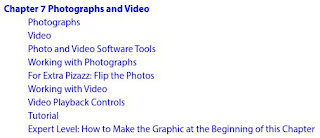I frequently use Microsoft PowerPoint to create and display
demonstrative graphics used in Opening Statements, Closing Arguments, and with
Expert Witnesses. Although professional graphic artists also use tools such as
Adobe’s Illustrator and Photoshop, in the hands of an experienced user,
PowerPoint can accomplish many of the same tasks, and it is much easier to work
with. In addition, it is often used to present demonstratives in the courtroom –
regardless of which software was used to design them.
 |
| Demonstratives: Making Effective Graphics for Trial |
Published by National Institute for Trial Advocacy (NITA),
John Cleaves’ recent book offers an in-depth look at various types of
demonstrative graphics used in litigation, and how to create them using PowerPoint.
Whether you an attorney interested in handling some of your
own graphics work or a paralegal working with trial support and graphics, this
book will help you get it done. Even if you already work with PowerPoint on a
regular basis, I would highly recommend this book, as there are many valuable “power-user”
tips and tricks offered. Plus, John is such a cool guy, and it’s always nice to
support one of our own.
In my experience, I have found that a hard-working trial
team is a successful trial team, which is noted in the Preface of the book:
“…attorneys who are most likely to have a successful outcome …are the ones who
have prepared most thoroughly, …and that preparation includes …demonstrative
graphics.”
Working with NITA’s fictitious “Homestead Properties, Inc.
v. Manhattan Fire & Casualty Co.” case as an example, the first chapter
touches upon the basic PowerPoint layout and developing trial themes and case
strategy. The remainder of the book addresses many typical litigation graphics
examples, and it covers nearly every function available in PowerPoint used to
create them.
By design, although the book may be read cover-to-cover like
a novel, it can also be easily be used as a reference to accomplish specific
tasks when developing your own demonstratives. The table of contents is laid out
in great detail, such that if you were interested in how best to add a video to
your presentation, jumping to Chapter 7 (Photographs and Video; Working with
Video) would be a good place to start. Since the book is available in
electronic formats for both iPad and computer viewing, jumping directly to a
desired topic is as easy as a click or a tap.
As noted by renowned photographer Ansel Adams, "people believe photographs."
 |
| (click or tap image to enlarge) |
About the Author: John Cleaves
John Cleaves is the Trial Technology Attorney and the
Manager of the Trial Technology Consulting team at Latham & Watkins LLP, a
department he founded and built for the firm. Previously, he was a Director of
Trial Support for FTI Consulting and the Director of Media Services for
LegaLink. He is an attorney licensed by the State Bar of Texas, where he
practiced law for a number of years before becoming a trial consultant.
As a trial consultant, John has assisted on trials and
arbitrations from as far west as Honolulu and as far east as London, from
Seattle to San Diego; Portsmouth, New Hampshire to Fort Lauderdale, Florida,
and most everywhere in between. It will come as no surprise that he is a
certified Microsoft Office Specialist in PowerPoint®.
Get the book:


No comments:
Post a Comment
Note: Only a member of this blog may post a comment.